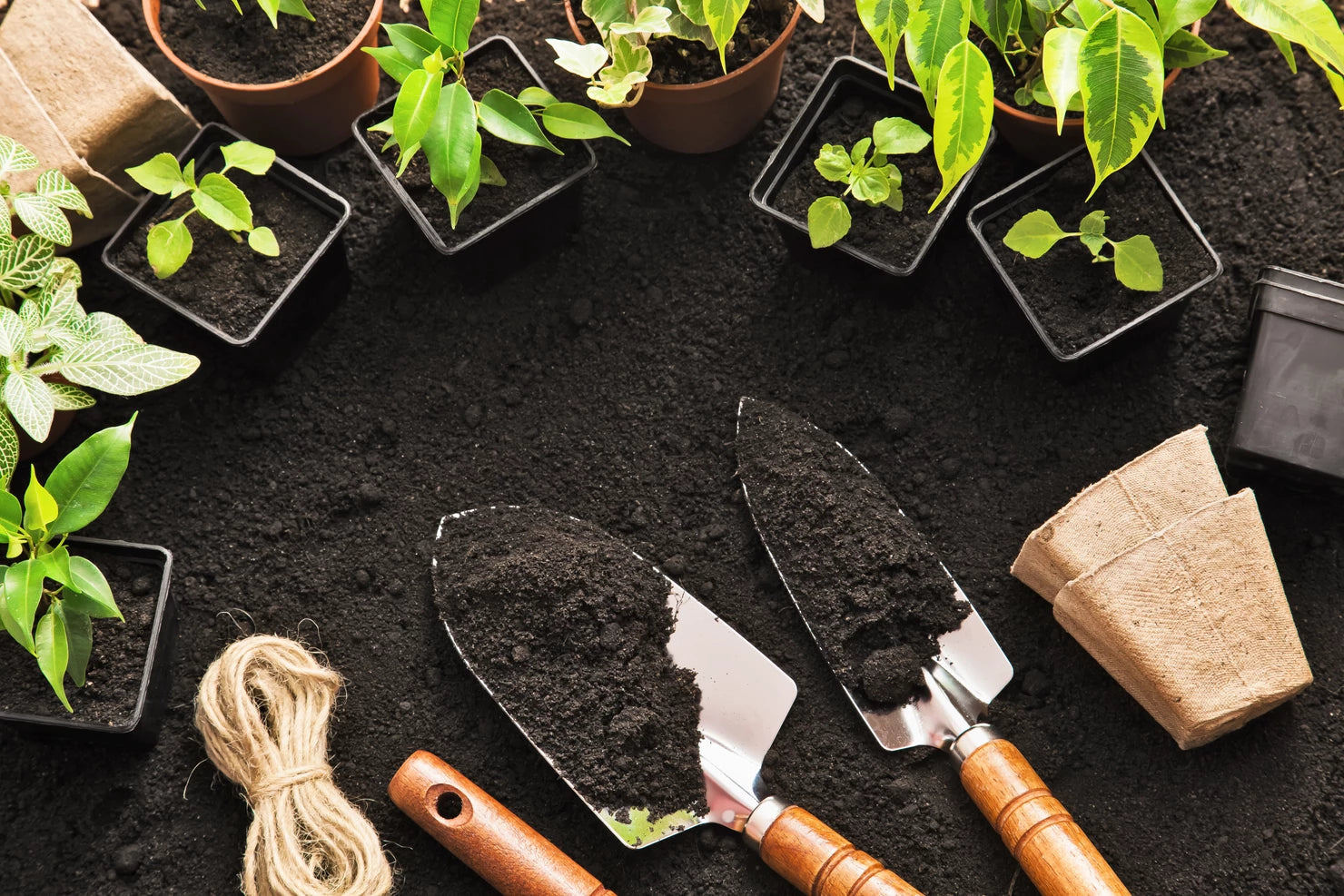A person complained that his Pilea Aquamarine plant is losing its leaves and asked the internet for help. As a plant owner, you may also face this issue.
The solution is to water it regularly if leaves feel droopy, or expose your plant to bright indirect light, and it will be alright.
Keep reading to find more care tips about this plant to avoid issues like leggy growth and root rot.
Also, if you are interested, you can read more about indoor plants, and air purifying plants or visit our store.
Part 1: How to Take Care of Pilea Aquamarine Plant?
Taking care of this plant is really easy. Let us share some quick plant care hacks with you.
Give your plant the right amount of water, neither too soggy nor too dry. Otherwise, your plant may fall victim to root rot.
- Droopy leaves mean your plant is thirsty.
- Yellow leaves mean your roots are very badly soaked in water and need help.
- Dust your plant, use a damp cloth to wipe dust off the leaves to get a healthy plant.
We will be discussing steps to take care of this pant in detail in this blog. In addition to Pilea Aquamarine plant, you can opt for other pet-friendly plants from our store.
Overview of Pilea Aquamarine
|
Characteristic |
Details |
|
Common Name |
Pilea Aquamarine, silver sparkles plant |
|
Botanical Name |
Pilea glauca |
|
Family |
Urticaceae |
|
Plant Type |
Perennial, Trailing Houseplant |
|
Mature Size |
6–12 inches tall, trailing up to 2+ feet |
|
Sun Exposure |
Bright, indirect light |
|
Soil Type |
Well-draining, rich, peat-based potting mix |
|
Soil pH |
Slightly acidic to neutral (6.0–7.0) |
|
Bloom Time |
Rarely blooms indoors |
|
Flower Color |
Tiny, pinkish, or white (often insignificant) |
|
Hardiness Zones |
10–12 (USDA), commonly grown as a houseplant |
|
Native Area |
Central and South America |
Care Tips for Pilea Aquamarine Plant:
1. Light:
- Avoid direct sunlight, leaves burn and develop brown, crispy edges in direct light, and provide bright indirect light.
- For low-light spaces, explore low-light suitable plants from our plants section.
2. Watering:
- Water when the soil's top 1-2 inches feel dry and use room temperature water.
- Water weekly in summer, reduce to every 10–14 days in winter.
- Place the pot in a tray of water for 10 minutes to let the roots drink up.
- Monitor your soil conditions with our moisture meter to water your plant accurately.
3. Soil:
- Use a blend of potting soil and perlite/pumice, 2:1 ratio and refresh soil once every 1-2 years.
- Add orchid bark or coco coir for extra aeration to avoid compaction.
- Use high-quality soil and fertilizers for the best growth results. Browse our soil and fertilizer collection for more details.
4. Temperature and Humidity:
- For happy and steady growth, a temperature between 65–75°F is ideal.
- Tolerates average homes but thrives with 40–50% humidity.
- Keep away from cold drafts (below 50°F/10°C) or hot radiators.
5. Fertilizer:
- Balanced liquid fertilizer, diluted to half-strength.
- Feed monthly in spring/summer and skip in summer/fall.
- Hold off on fertilizing for 2–3 weeks post-pruning.
- Use our fertilizers guide to choose the right nutrient mix for your plant.
6. Pruning:
- Prune during spring or summer, during the active growth season and use sterilized tools.
- Avoid removing 20% of the plant at once.

Part 2: How to Propagate Pilea Aquamarine?
Propagating this vibrant plant is simple and rewarding! Follow these steps to grow new plants from cuttings:
Step-by-Step Guide:
1. Take Stem Cuttings:
Use Clean, sharp scissors or pruning shears and Snip a 4–6 inch stem just below a leaf node; remove the bottom 2–3 leaves to expose the nodes.
2. Root in Water or Soil:
- Water method: Place cuttings in a glass of room-temperature water and change water every 3–4 days to prevent bacteria.
- Soil method: Dip the cut ends in rooting hormone for sped-up growth, and plant in moist, well-draining soil.
3. Transplant Rooted Cuttings:
Wait until roots are 1–2 inches long, then transfer to soil (water method). Keep undisturbed until new growth appears.
4. Care for New Plants:
Keep soil moist for the first month and expose it to bright but indirect light.
ProTip: Best done in spring/summer for faster success.
Post-Propagation Care
- Avoid direct sun to prevent leaf scorch.
- Maintain 40–50% humidity.
- You can use professional propagation tools for the best results.
Potting and Repotting Pilea Aquamarine
Repotting keeps your plant healthy and thriving. It is also necessary to use the right-sized pots with proper drainage holes. You can explore some options and choose the right one for your plant from our website. Here’s how to do it right:
|
Aspect |
Potting |
Repotting |
|
Soil Selection |
Use a well-draining, peat-based potting mix with added perlite or sand for aeration. |
Refresh the soil when repotting to maintain nutrient levels and prevent compaction. |
|
Pot Type |
Choose a pot with drainage holes to prevent waterlogging. |
Use a slightly larger pot when repotting to accommodate growth. |
|
Timing |
Pot during the growing season (spring or early summer) for optimal establishment. |
Repot every 1–2 years or when roots outgrow the container. |
|
Method |
Fill the pot with soil, gently place the plant, and cover the roots lightly. |
Carefully remove the plant, shake off old soil, trim dead roots, and transfer to a new pot. |
|
Watering |
Water lightly after potting to help the soil settle, but avoid overwatering. |
Water thoroughly after repotting to reduce transplant shock. |
|
Root Health |
Ensure roots are not buried too deep to prevent rot. |
Inspect roots for rot or overcrowding and prune if necessary before repotting. |
|
Aftercare |
Place in bright, indirect light and keep the soil slightly moist. |
Keep in a warm, humid spot for a few weeks to help it adjust. |
Note: Patience is key — new growth may take 4–8 weeks!
Add Charm with Pilea Peperomioides: The Cute Chinese Money Plant:
Pilea Peperomioides, also known as the Chinese Money Plant, is a pet-friendly beauty that thrives with minimal care. Its round, vibrant leaves bring freshness to any space, making it a perfect addition to your home.!
Shop Now
Part 3: What are the Common Problems of Pilea Aquamarine?
Add Charm with Pilea Peperomioides: The Cute Chinese Money Plant:
Pilea Peperomioides, also known as the Chinese Money Plant, is a pet-friendly beauty that thrives with minimal care. Its round, vibrant leaves bring freshness to any space, making it a perfect addition to your home.!
Shop NowPilea Aquamarine is an eye-catching, low-maintenance plant, but it can face watering, light, and the environmental challenges. Addressing issues early ensures vibrant growth. Below are common problems, causes, and solutions:

Issue 1: Yellowing Leaves
Causes:
- Overwatering: Leads to root rot.
- Poor drainage or compacted soil: Traps moisture around roots.
- Insufficient light: Weakens plant health.
Solutions:
- Watering: Let the top 1–2 inches of soil dry before watering.
- Soil/pot: Use a well-draining mix (e.g., potting soil + perlite) and ensure pots have drainage holes.
- Light: Place in bright, indirect light (e.g., near an east-facing window).
Issue 2: Leggy Growth
Causes:
- Insufficient light: Stems stretch toward light.
- Over-fertilization: Promotes weak, rapid growth.
- Lack of pruning: Untrimmed stems grow unevenly.
Solutions:
- Light: Move to a brighter spot with indirect light.
- Fertilizer: Feed only in spring/summer with a half-strength balanced fertilizer.
- Pruning: Trim leggy stems above leaf nodes to encourage bushiness.
Issue 3: Leaf Curling
Causes:
- Underwatering/low humidity: Leaves curl to conserve moisture.
- Direct sunlight: Causes dehydration.
- Temperature stress: Drafts or sudden changes.
Solutions:
- Watering: Keep soil lightly moist (not soggy).
- Humidity: Boost with a pebble tray or occasional misting.
- Location: Avoid heaters, AC vents, and direct sun.
Issue 4: Brown, Crispy Leaf Edges
Causes:
- Dry air/low humidity: Common in heated rooms.
- Fertilizer buildup: Excess salts damage roots.
- Inconsistent watering: Alternating drought and flood.
Solutions:
- Humidity: Use a humidifier or group with other plants.
- Soil care: Flush soil every 3 months to remove salt buildup.
- Watering: Maintain a consistent schedule (check soil moisture weekly).
Issue 5: Root Rot
Causes:
- Overwatering: Soggy soil suffocates roots.
- Poor drainage: Stagnant water in the pot.
Solutions:
- Watering: Reduce frequency; let the soil dry between sessions.
- Repotting: Trim black/mushy roots and repot in fresh, well-draining soil.
- Prevention: Always use pots with drainage holes.
Pro Tip: Rotate the plant weekly for even light exposure.
Enhance your space with the beauty of nature. These carefully selected plants are perfect for adding a refreshing touch to any room.Conclusion:
In this blog we discussed how much of a beauty Pilea Aquamarine plant adds to your space. By ensuring bright indirect light, well-draining soil, and consistent (but not over) watering, you’ll keep this plant thriving for years. Water once the soil feels dry and avoid over-watering to avoid problems like yellowing of leaves and root rot. We also learnt propagation methods and tips and best care hacks. If you are interested in similar indoor plants, visit our site to explore more options.
Frequently Asked Question
1- Are leaf-shine products safe to use?
Avoid chemical sprays; they can clog pores. Instead, wipe leaves with a damp cloth or a drop of neem oil for natural shine.
2- Why does my plant lean toward one side?
It’s reaching for light! Rotate the pot 90° every time you water to encourage balanced growth.
3- Why are the leaf edges turning brown?
Brown edges can result from low humidity, fertilizer buildup, or inconsistent watering. Increase humidity with a pebble tray, flush the soil occasionally to remove excess salts, and maintain a consistent watering routine.
4- Should I fertilize my Pilea Aquamarine?
Fertilize monthly during spring and summer with a balanced liquid fertilizer diluted to half strength. Avoid fertilizing in fall and winter when the plant is dormant.
5- What’s the lifespan of a Pilea Aquamarine?
With proper care, it can live 5+ years. Propagate cuttings regularly to keep the plant youthful and vigorous.











 Bird of Paradise
Bird of Paradise  Jade Plant
Jade Plant